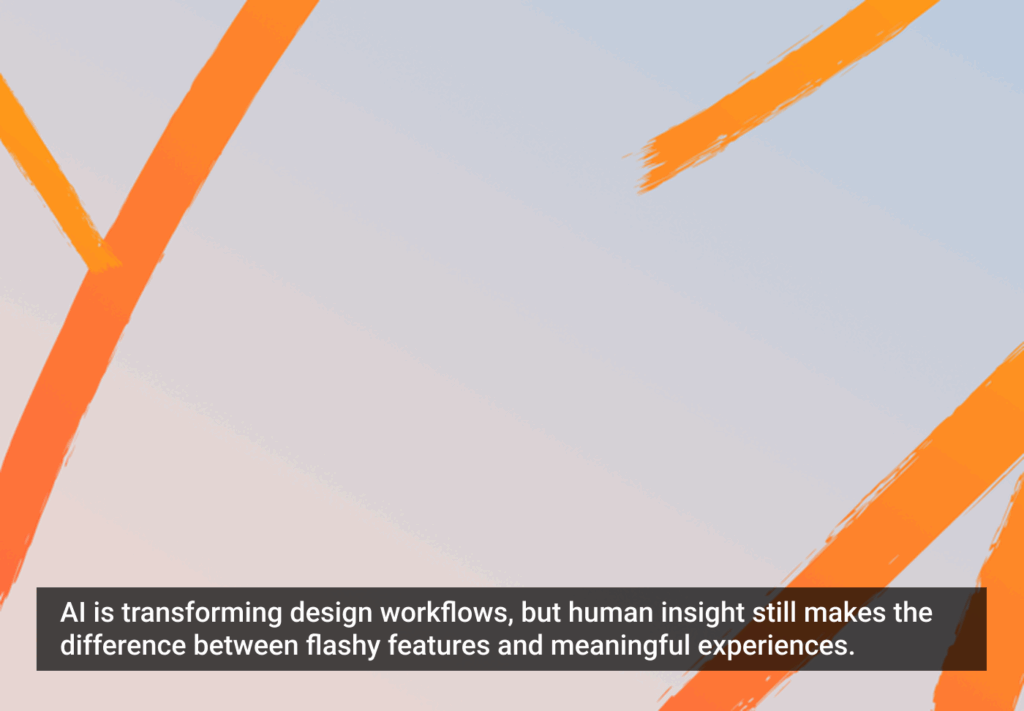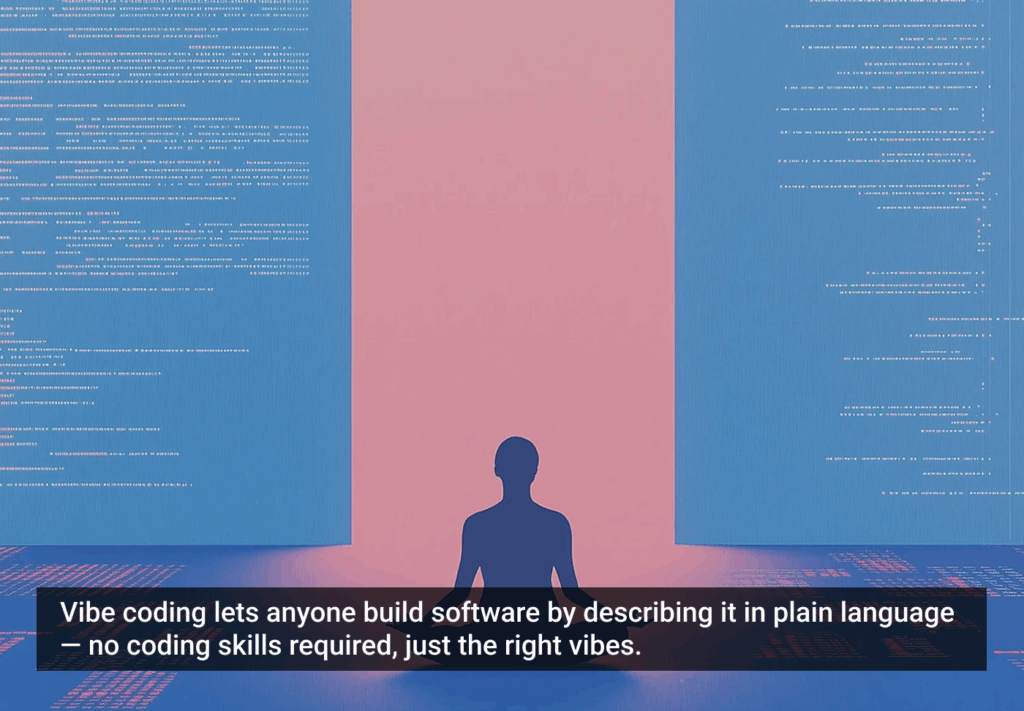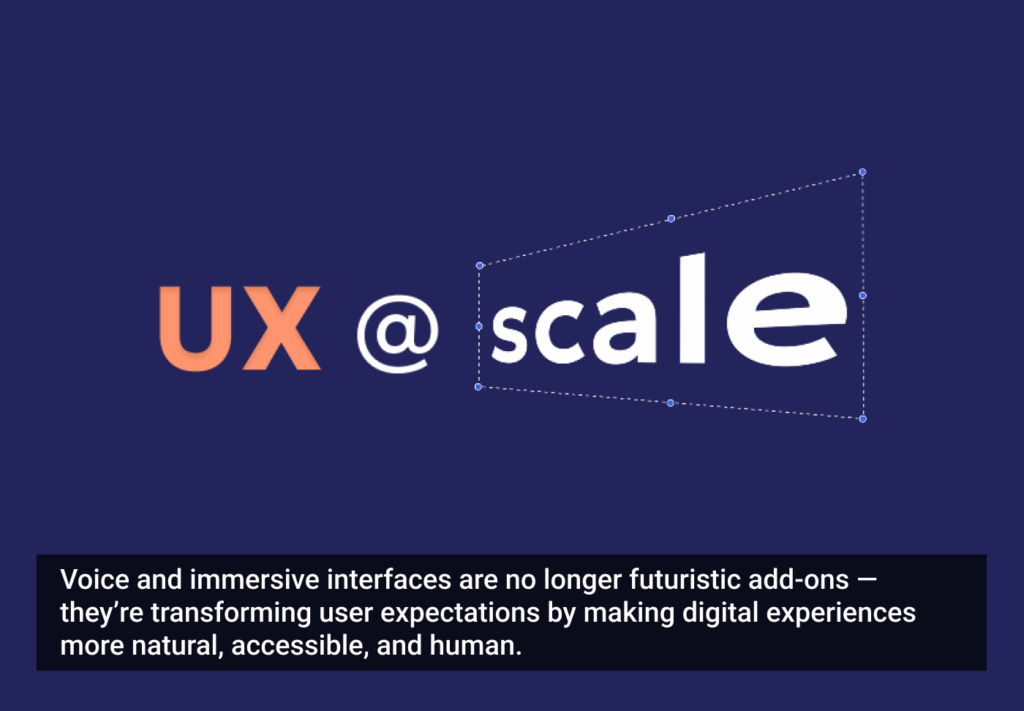Design is helping governments, organizations, and businesses improve the quality of interactions with the people they serve, leading to experiences that are more meaningful and effective. Business leaders understand now more than ever that continued focus on improving the customer journey is an imperative to designing products that win, satisfy their customers, and empower their employees. Savvy planners will consider these emerging movements as they look to the future:
1. Maturation of the Design Discipline within Organizations
More and more, organizations are recognizing the importance of design and how it can be leveraged to improve the customer experience beyond discrete interactions. As organizations mature in terms of their understanding of design, they move from “hitting it with a pretty stick” (visual design, interface design), to valuing design as an essential discipline and critical success factor (user experience design), to fostering an empathy-driven culture where the customer is the focus and that thinking is woven into business practice (experience strategy, service design, design thinking, design training).
As believers in—and practitioners of—design, we will continue to investigate models for communicating the benefits of design to executives and decision makers, immersing them in the process, and providing them with essential training, methods, and tools to aid their efforts. In addition to delivering exceptional experiences, our industry will be tasked with helping organizations transform themselves into being customer focused in all they do. We will also continue to see customer-centric companies win in the marketplace.
2. Identification of Unmet or Underserved Needs in the Marketplace
“Involve the people who will be affected by the solutions we create in the process of creating them.” This mantra is used to succinctly communicate the core of human-centered design. When we truly understand the context of use and real human needs for a product or service, we have the inspiration and information needed to design excellent experiences. However, sometimes the work we do is artificially focused by assumptions and hypotheses that are no longer valid or constrained by roadmaps and timelines. This is what leads to the creation of products and services that are useable, but not useful, because they do not address the depth of need or deliver meaningful value—and it can happen overnight.
Companies that invest in open-ended qualitative and ethnographic research to develop a comprehensive understanding for what the customer truly needs and values on an ongoing basis will receive the rich information that guides experiential improvements for years to come. I am passionate about how to identify and address unmet needs in healthcare as well as in other industries, and am looking forward to seeing what models to do so emerge in research, design, and business.
3. Designing for Emotion
What we remember about an experience is what we felt when it was happening. We may have gotten the information we needed, but did we feel frustrated, or did the ease of information access give us a thrill? Designers are now looking at how to research emotion, design for emotion, and validate that the design is eliciting the emotions that were intended. Emotion will tell us where we need to focus, where we are doing well, and where we need to improve. Through research, we can begin to map the emotional state of the person to their journey to understand what is affecting them and how. Then, we can design an improved journey where friction points are recovered from or avoided entirely, and delight is inserted at opportune moments.
Emotion will tell us where we need to focus, where we are doing well, and where we need to improve
As we explore this territory further we look to other industries for inspiration. Adam Connor, Experience Design Director at Mad*Pow, takes a cue from the film industry, using a modified “beat sheet” to design for emotion at the micro-interaction level. This, combined with trend toward increased biometric sensing abilities in the devices we interact with daily, will lead to interfacing and interactions adjusting to our mood. Consider a car in the not-too-distant future that might take your pulse on an ongoing basis, tracking which songs calm and which arouse, and recommend a calming song when the driver appears to be angry. Emotion will increasingly inspire the solutions we create and influencing the design principles that guide them.
4. Designing for Motivation and Behavior Change
The exciting convergence of design, technology, and psychology may enable us to create the solutions that will help people change their behaviors, as well as their lives. We have seen an explosion in discussions around persuasive design, gamification, and behavior change programs, services, and products that promise to deliver. We are in front of a field of opportunity that is ripe for exploration. Dustin DiTommaso, who leads the behavior change practice at Mad*Pow, believes in aligning with the intrinsic motivation of an individual as opposed to relying solely upon external triggers, rewards, or penalties. As we see this field flourish, there will be an evolution in the use of design and technology to create games, applications, or programs that help to facilitate behavior change. This growing discipline will enable people to tackle any sort of personal flaw or human pain.
The ethics of behavior change in terms of freedom and autonomy will be discussed as corporations and governments investigate how to leverage psychology to persuade the masses. We will see solutions tread the line between empowerment and control. Will we help people make the decisions that they feel best about or manipulate them into doing what “we” want them to do?
5. Sharing the Vision and Continuing the Legacy
The digital landscape is ever-evolving and human-centered design provides us the vehicle to tame the wilderness. The empathy we gain for real people through research will inspire us to deliver solutions that provide meaning and value. I believe to my core that design can help improve the human condition and I am not alone. Michael Westcott, former president of the Design Management Institute battled ALS until October 4, 2014. With his parting, our industry has lost a visionary who was driven to communicate the benefits of good design, educate leaders and practitioners alike, and transform corporate culture around the globe. I had the honor of having a conversation with him this past September, and asked where he got the energy and charisma to be simultaneously battling a terrible disease and continuing to work at the same time. He responded, “I can’t stop, we have so much work to do!”
Yes, we do. I personally share Michael’s belief in—and passion for—the power of design, and will be working hard to continue his mission. I know those of you reading this do as well. Rest in peace Michael. You will be missed.
Image of courtesy Shutterstock







